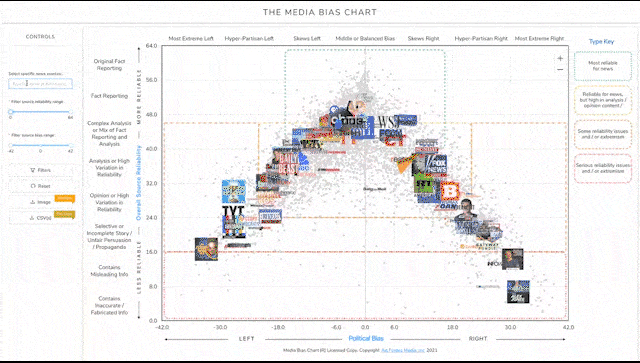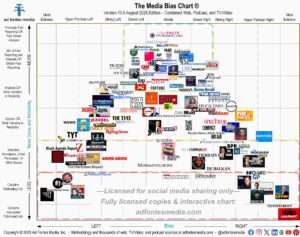The Lead with Jake Tapper Bias and Reliability

Compare the scores of CNN: The Lead with Jake Tapper to other sources on our free Interactive Media Bias Chart. Click Here!
Bias: Strong Left
Reliability: Generally Reliable/Analysis OR Other Issues
Overall Score
The following are the overall bias and reliability scores for CNN: The Lead with Jake Tapper according to our Ad Fontes Media ratings methodology.
Reliability: 36.90
Bias: -15.18
CNN: The Lead with Jake Tapper is a cable TV program that airs weekdays on CNN. The show, which debuted in 2013, covers the day’s top stories, from politics to sports and popular culture. “The Lead” has been simulcast on CNN International since 2018. Tapper, CNN’s chief Washington correspondent, also hosts the CNN Sunday morning show, “State of the Union,” and previously served as a senior White House correspondent at ABC News and worked at Salon.com. He is the author of several books.
Panels of analysts from Ad Fontes Media regularly review representative sample content to rate it for reliability and bias. Each panel of analysts comprises one left-leaning, one right-leaning, and one center-leaning analyst.
The team considers a variety of factors when rating content. To determine its reliability score, we consider the content’s veracity, expression, its title/headline, and graphics. We add each of these scores to the chart on a weighted scale, with the average of those creating the sample content’s overall reliability score.
To determine sample content’s bias score, we consider its language, its political position, and how it compares to other reporting or analysis from other sources on the same topic. We add each of these scores to the chart on a weighted scale, with the average of those creating the content’s overall bias score.
The bias rating, demonstrated on the Media Bias Chart®️ on the horizontal axis, ranges from most extreme left to middle to most extreme right. The reliability rating, demonstrated on the chart’s vertical axis, rates sources on a scale from original fact reporting to analysis, opinion, propaganda and inaccurate/fabricated information.
Reliability scores for articles and shows are on a scale of 0-64. Scores above 40 are generally good; scores below 24 are generally problematic. Scores between 24-40 indicate a range of possibilities, with some sources falling there because they are heavy in opinion and analysis, and some because they have a high variation in reliability between articles.
Bias scores for articles and shows are on a scale of -42 to +42, with higher negative scores being more left, higher positive scores being more right, and scores closer to zero being minimally biased, equally balanced, or exhibiting a centrist bias.

